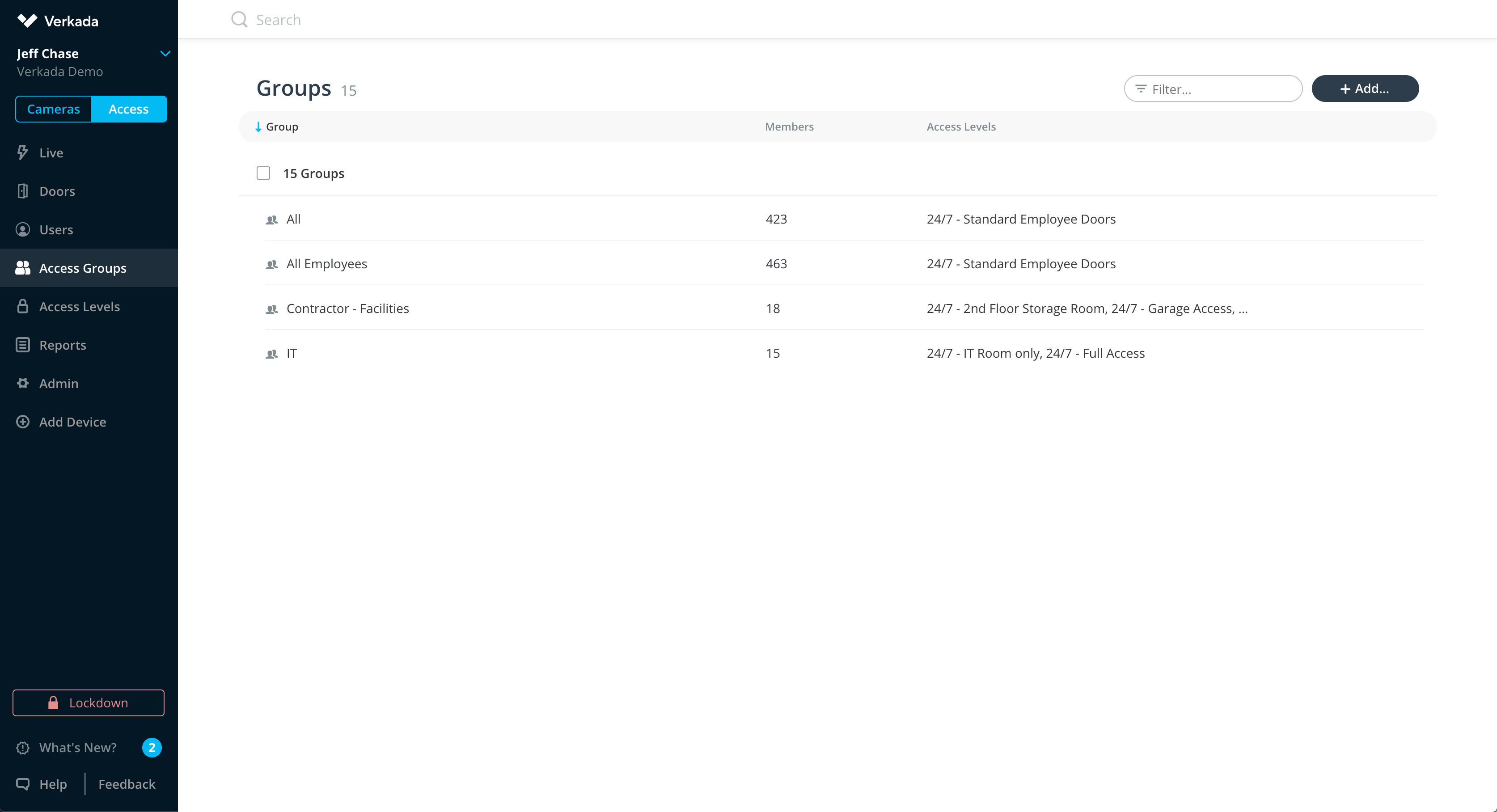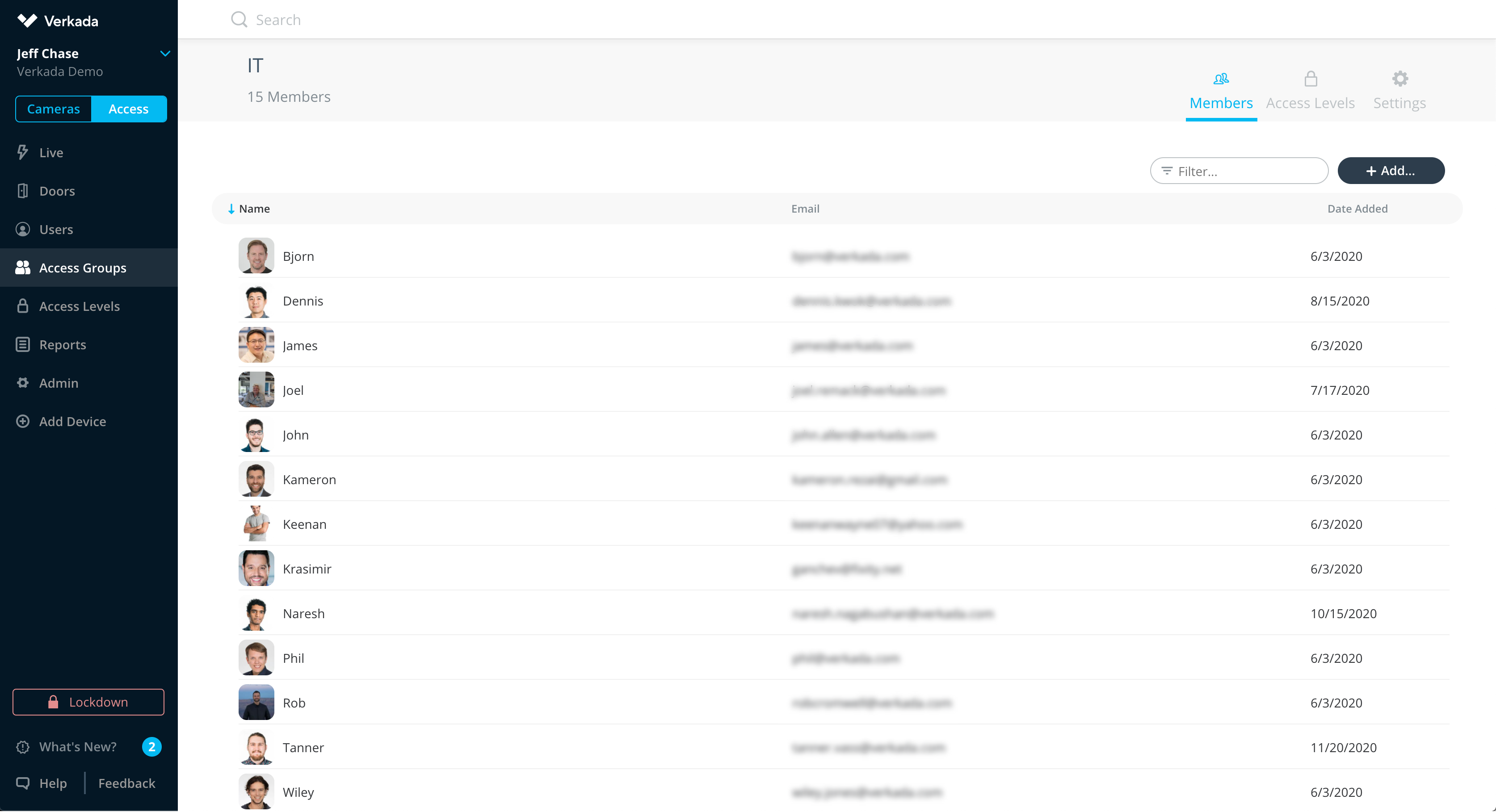Beyond just securing your points of entry, at the core of any physical access control solution is the ability to manage user credentials. From controlling who can unlock a certain set of doors to customizing schedules for certain types of users, credential management is what ensures access control systems work the way they should.
However, one of the biggest pain points for credential management is that managing user credentials can be a complicated and time-consuming process with many on-prem solutions. Starting with accessing the system itself—which can depend on having access to areas like an IDF room—to understanding how the management software works, making these necessary changes can be challenging, to say the least.
These issues are only amplified by the fact that many people across your organization have similar needs. From schedules to secure access to sensitive areas, making changes to a bulk set of users adds greater complexity to the process.
To make it easier for teams to manage their credentialed users, Verkada’s cloud-based access control solution includes capabilities for creating Access Groups to simplify your organization's management, related teams and functions.
What is an Access Group?
Within any access control solution, there are a set of credentialed users. These users are provided with access to a building and a certain set of doors using their keycard or another form of credentialed access. However, not every user should have access to every door, but managing this for every credential can add unnecessary overhead to managing credentials.
An access group is similar to how an active directory solution functions but specifically for your organization’s credentials.
The key benefit here is that instead of making a change for each user, changes can be applied to an entire group of similar credentials. Doing so allows teams to efficiently manage similar users across their organization, making changes to accessible doors or schedules.

How to Streamline Credential Management With Access Groups
From Verkada’s web-based Command platform, administrators can use Access Groups to organize users into designated groups to simplify credential management across their organization. This includes:
Adding Members: Administrators can add any credentialed user to any Access Group.
Applying Access Levels: Each group can be associated with a set of Access Levels which sets rules and schedules on a per-door basis.
Once an Access Group is created, administrators can easily manage how they can access their buildings using dedicated Access Levels. Each organization can have as many access levels as they wish.
For example, in addition to giving front entry access to all employees, an IT team will need to access restricted areas like IDF rooms and equipment storage. With a dedicated Access Group for an organization’s IT department, they can ensure access to those rooms is restricted to the IT team.

Additionally, multiple Access Levels can be applied to each group. In the example of an IT team, they would be associated with the Access Level for all employee doors and IT-designated doors.
Most importantly, when changes are made to an Access Level associated with a group, users can make those changes from anywhere. That update will automatically apply to all users within the Access Group. There are no additional steps needed for ensuring that users have proper access to doors.
Beyond the example above, there is a wide range of applications that Access Groups can serve. From efficiently managing credentials of contracted workers to making real-time adjustments to schedules for certain groups of employees, using Access Groups makes it easier for teams to ensure they are effectively managing user credentials and secure access across their buildings.
To learn more about Verkada’s cloud-based access control solution and how to leverage access groups to simplify user management across your doors, join our upcoming webinar or sign up for a personal 20-minute demo today.


